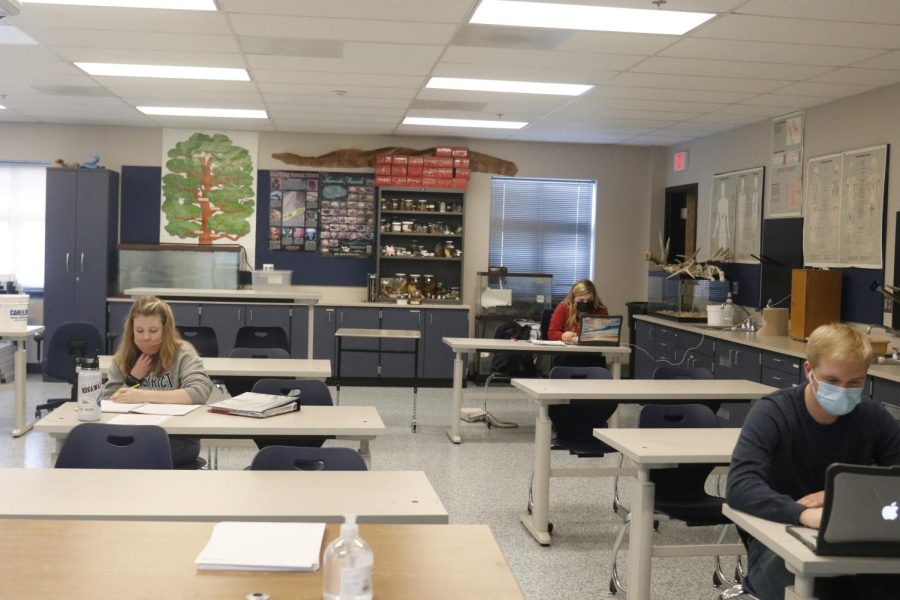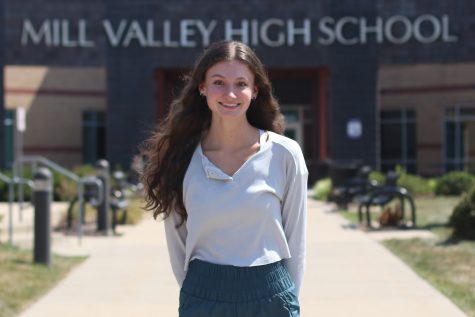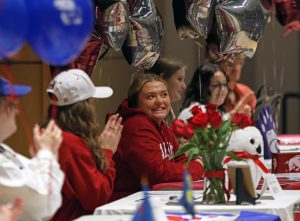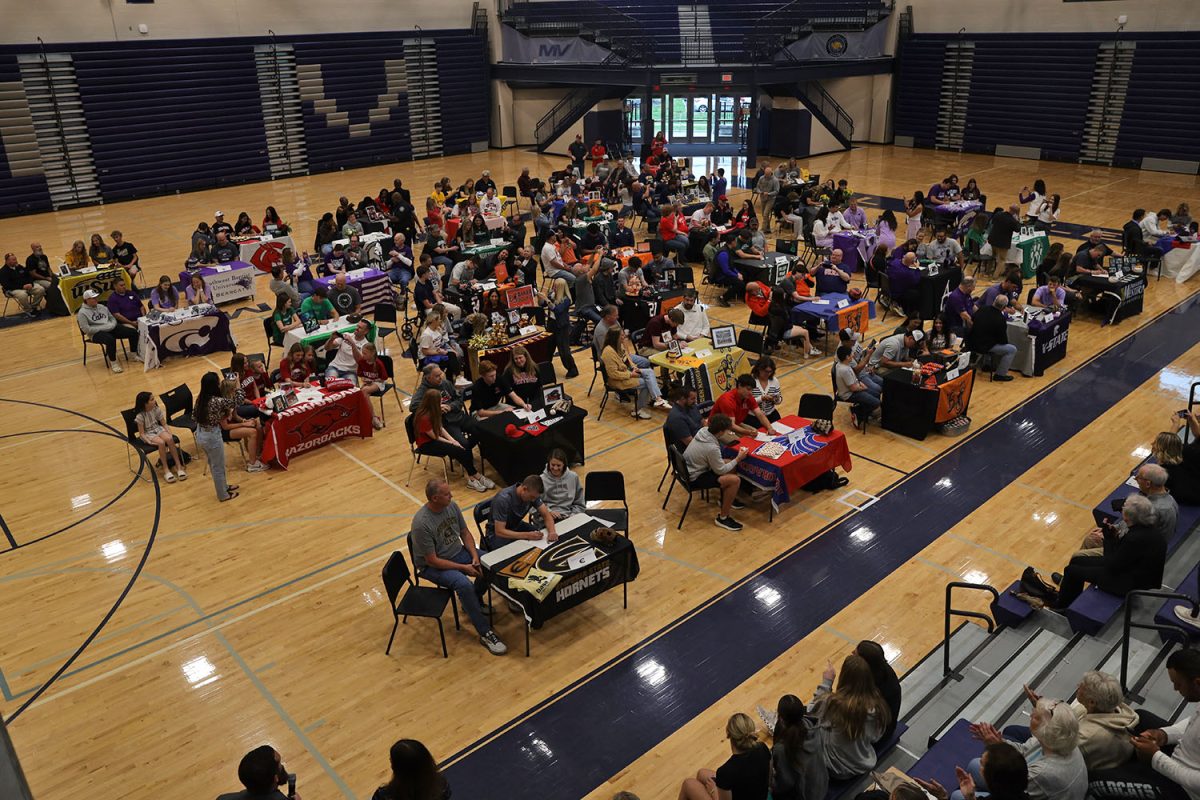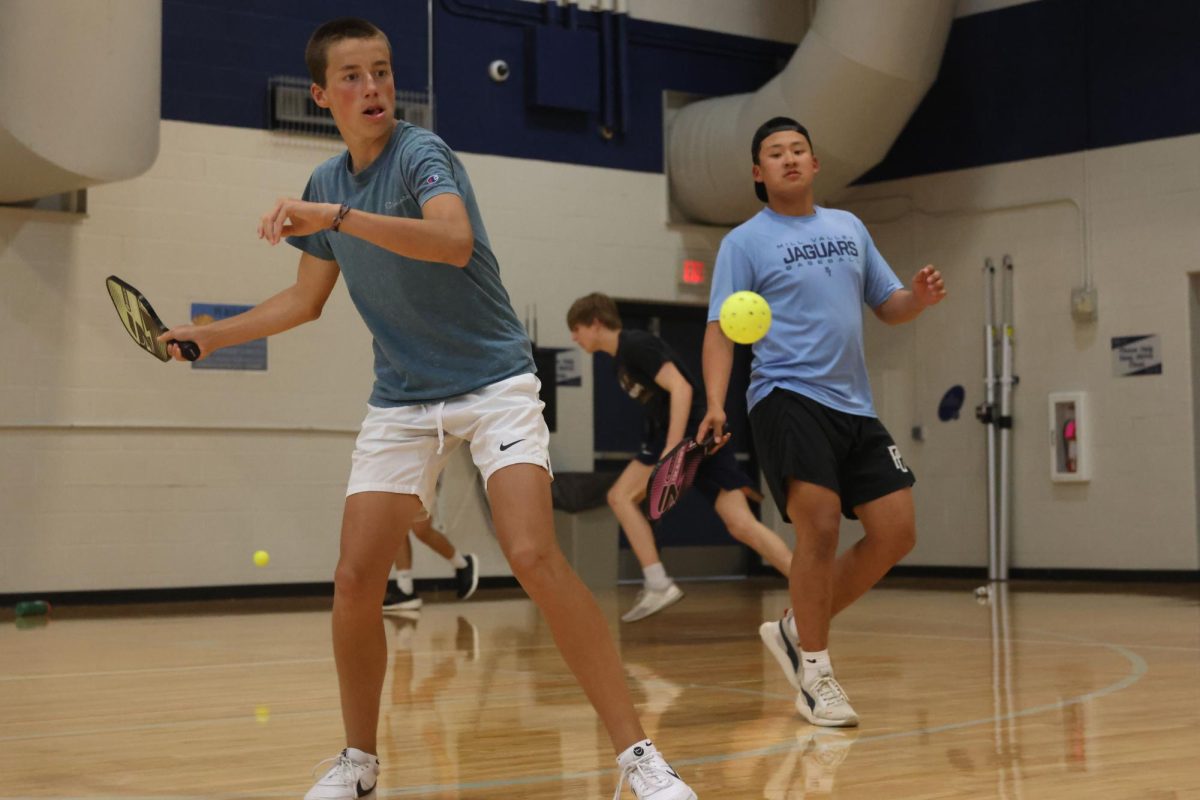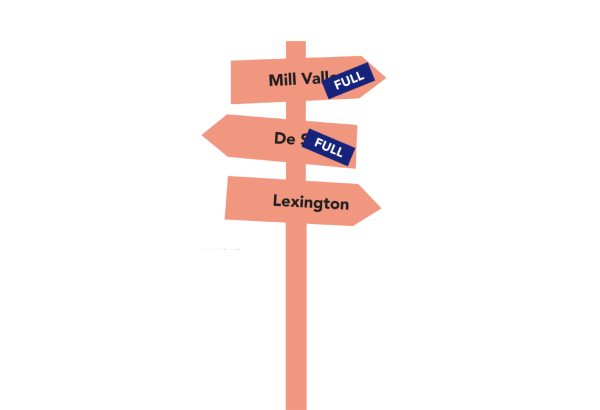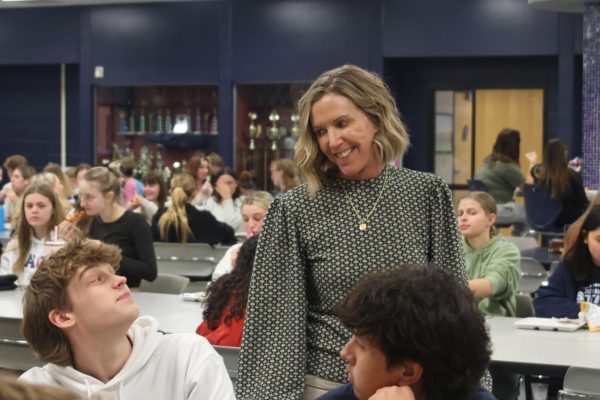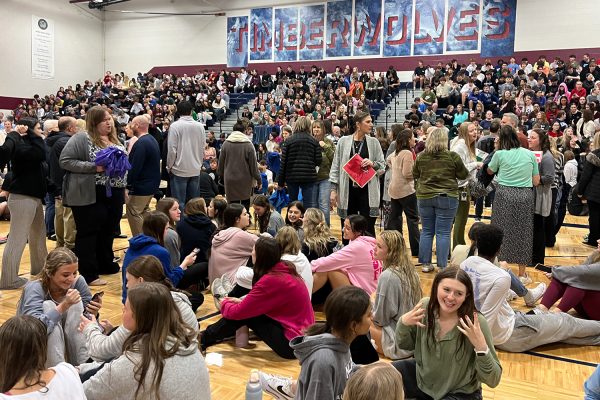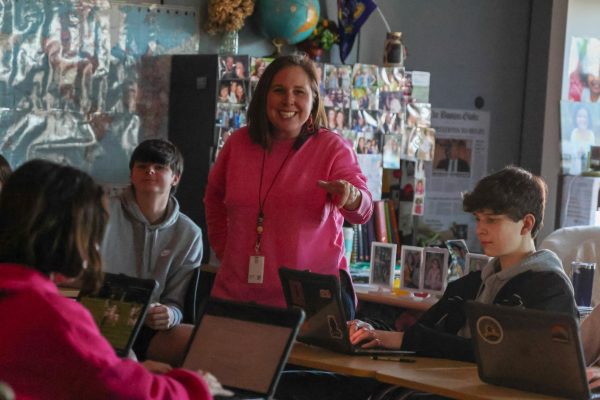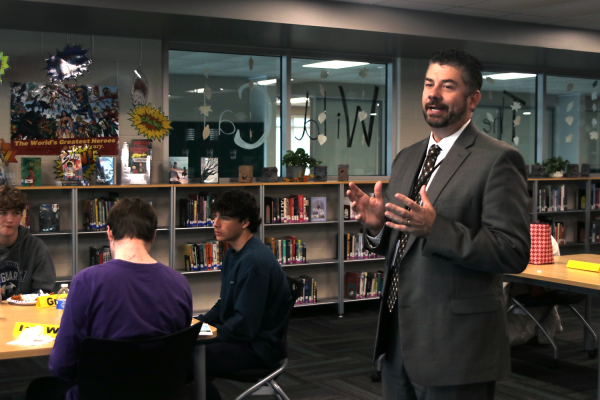Second semester schedule changes create varying class sizes
Due to “semesterizing” classes, some students’ year-long classes are different from first semester
Students work on classwork in science teacher Eric Thomas’ Anatomy class during Blue 1 on Thursday, Jan.13. Thomas only has six students in his Blue 1 class due to scheduling changes. Last semester, he had 15 students in the same class.
January 18, 2022
Since the start of the third quarter, many students and teachers have noticed that their schedules look different from first semester. For students, a number of their year-long classes may have switched which block and day they are on and for teachers, the size of their classes may differ greatly.
According to counselor Chris Wallace, the reason for these changes is due to the district’s decision to “semesterize” year long classes, which follows the model that most other schools use. Wallace explains that this allows for year long classes to change blocks, but remain with the same teacher in order to accommodate more of the student’s elective choices.
“It greatly improved the ability for students to get into elective classes of their choice,” Wallace said.
Depending on how it has affected them, students and staff have differing opinions.
Science teacher Eric Thomas’ Blue 1 Anatomy and Physiology class went from 15 students in the first semester, to only five now. Thomas explained that it’s fairly normal to have class sizes change, especially in the first block because of senior shortened day.
“There’s not a silver day anatomy,” Thomas said, “The [senior] wants to stay in anatomy, so they end up switching out of Blue 1 so they can sleep in and end up in Blue 4.”
Despite the changes, Thomas sees opportunity for more in-class discussion with the small class.
“You have a lot more time to answer questions. In the fourth quarter we dissect… and you get a lot more individual attention once it comes to a lab,” Thomas said.
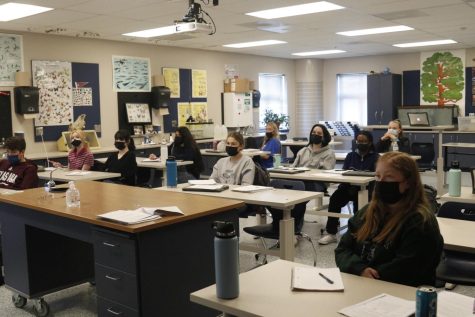
While a small class may have more time for discussion, junior Devin Sitcler has had to adjust to larger classes. Both his English and US History classes switched the day and block they originally occurred.
Sitcler believes that the larger class sizes have been somewhat of an inconvenience to him.
“Both classes had grown in size, which made me [feel] very uncomfortable and crowded,” Sitcler said.
In addition to the larger class sizes, the people in his classes have impacted Sitcler’s experience.
“In both classes originally I had good friends I could sit by but now there’s just me in a crowded room,” Sitcler said.
Although students have had to adjust to their new schedules, those schedule changes come with benefits. With more students receiving the classes they requested, there are significantly less schedule changes counselors have had to make this semester.
“Having those year-long semesterised classes helped on both ends of things: getting into your first choice for electives, but also lowering the amount of changes that were needed on the back end.” Wallace said.



